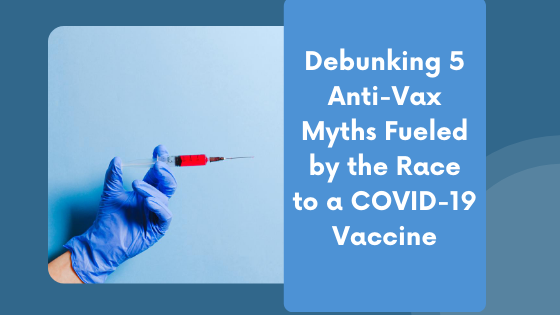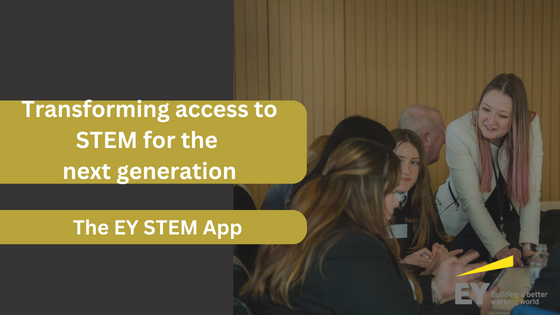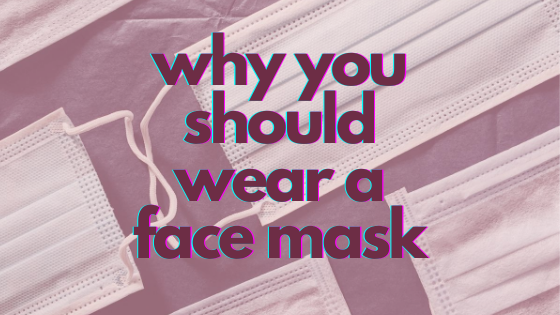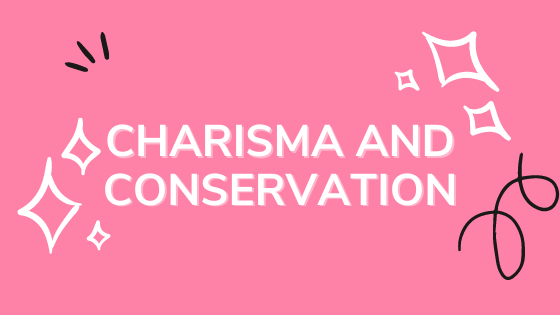By Nidhi Parekh of The Shared Microscope and Sheeva Azma of Fancy Comma, LLC
The US Government has recently signed a deal with Moderna for the production of 100 million vaccine doses of their mRNA vaccine in development. In this post, Nidhi Parekh of The Shared Microscope and Sheeva Azma of Fancy Comma, LLC focus on the backlash that COVID-19 vaccine candidates have been receiving with the wake in the anti-vax movement.
For most people, the possibility of a safe and effective coronavirus vaccine is a beacon of hope. It is encouraging that there are more than 100 vaccine candidates in development globally, with at least 7 of these promising vaccines in the clinical trials process. We have previously written about what it’s like to participate in a clinical trial, and recently published a guide to how the top COVID-19 vaccine candidates work.
Although there are many viable vaccines in the pipeline, they only work if enough people get them to develop herd immunity. Thanks to anti-vax misinformation, that might not be possible. Anthony Fauci has stated that anti-vax beliefs could undermine the global response to the pandemic.

With conspiracy theories on how the virus is man-made, to how the vaccine is a ploy by government officials or even pharmaceutical companies to make money through vested interests, the anti-vax movement has unfortunately taken hold globally. A survey suggests that one in six British people admit to refusing a COVID-19 vaccine. Scientists and public health officials have warned that the anti-vax movement may sully all efforts against the COVID-19 pandemic, and the MIT Technology Review has even published a how-to guide for talking to conspiracy theorists.
As scientists, we know misinformation and pseudoscience when we see it. In this post, we debunk some of the most common anti-vax opinions we have seen on the topic. Some of these anti-vax tweets have been directed towards us and other scientists, and others at news channels or vaccine manufacturers themselves. The new and unfamiliar can seem dangerous; yet, when you learn more about it, you will find that your fear disappears. Read on to learn about five of the most ridiculous anti-vax beliefs.

Myth #1: COVID-19 vaccines are made from embryonic stem cells.
Embryonic stem cell research has been very controversial, and was even banned by President Bush in the 2000s, so it makes sense that the anti-vax movement would seek to connect embryonic stem cell research with the COVID-19 vaccine to dissuade people. However, the statement that COVID-19 vaccines contain any type of stem cell is nothing more than misinformation. Embryonic stem cell research has nothing to do with any of the COVID-19 vaccines. Many of the COVID-19 vaccines in development are manufactured differently than traditional vaccines, and are often synthesized in a lab, either from parts of the SARS-CoV-2 virus, via a viral vector, or by other means. It should be noted though, that no vaccines are developed from stem cells. To know more about the top COVID-19 vaccines in development, including how they are developed and their active ingredients, we encourage you to look through our COVID-19 Resources page, where we have individualized posts on the Moderna vaccine, the Oxford/AstraZeneca vaccine, the Novavax vaccine, and CoronaVac (developed by Chinese Biotech company Sinovac). These articles also aim to provide explanations (with illustrations) on how these vaccines work to build immunity against the SARS-CoV-2 virus.

Myth #2: The COVID-19 vaccine turns you into a cyborg.
A lot of fake news has surfaced with regards to the COVID-19 vaccines turning someone into a cyborg; perhaps a mish-mash of the news surrounding the COVID-19 vaccines and 5G technology. The Oxford English Dictionary defines a cyborg as “a creature that is part human, part machine.”

As per the image on the left, the mRNA vaccine being developed by Moderna is allegedly “designed to genetically engineer humans to produce certain antibodies. Essentially, once engineered you are no longer human, and technically, the owners of the vaccine who patent that genetic sequence own part of you.”
To directly and clearly refute this message, please note that the Moderna vaccine and the other COVID-19 vaccines in development do not have any “ingredients” that are remotely technological; we wish science was as cool as the science fiction we see in movies. In addition to this, humans too are not genetically engineered to produce antibodies against the spike proteins. Humans naturally produce antibodies using their own immune systems. The vaccine aims to help us make these antibodies without causing a COVID-19 infection, by exposing one to a very small amount of inactivated SARS-CoV-2 or even a small part of the virus’s structure.
The vaccine does not in any way modify our genetics. The vaccine also can not make us cyborgs, as machines have no DNA or even a genetic system at all. For more information on the Moderna vaccine, please check out our previous post here.

Myth #3: Vaccine = Mind Control
The central idea in this myth is that the COVID-19 has small nanoparticles that can not only track and trace you, but turn you into an artificial intelligence or AI machine — in other words, a robot. Like other myths, this one is also based on science fiction movies. To explain further, nanoparticles are tiny, microscopic molecules that are not visible to the naked eye. And one vaccine that we know of, Novavax, does contain nanoparticles that help it work better. But they do not turn you into a robot.

Nanoparticles are small particles on the order of 10-9 meters (also known as a nanometer). Because nanoparticles are so small, they can interact with molecules on an atomic level — this is what makes nanoparticles so powerful because these atomic interactions give the nanoparticles unique properties. While nanoparticles are increasingly used in a variety of drug delivery applications, such as in cancer and AIDS, they do not turn you into a robot.
The part where the image says that the “vaccine will allow you to be controlled and make you an AI with no ability to choose for yourself” is out of the question – it is physically impossible for a vaccine to control your body like that, except of course, in a science-fiction movie which is by no way based on true science.
Myth #4: The Government is paying for this vaccine, so therefore, they have a vested interest and it’s all for their profit.
Although a somewhat interesting thought, this, too, is a myth. Governments around the world have together invested trillions of dollars into research to develop a safe and effective COVID-19 vaccine. A vaccine against COVID-19 will enable us to return to “normal.” Without these initiatives worldwide, “normal” is currently a far-fetched dream.
The only vested interest that the governments have (and must have) is to ensure the survival and safety of their citizens. To help, governments have been feeding money into their economies, essentially for free. For example, the UK is currently subsidizing dining out via a scheme wherein the government covers 50% of all people’s bills at restaurants. In the US, Trump has been pushing to boost the economy by giving away free money to both people and businesses in the form of aid.
The government is invested in a vaccine for COVID-19 because its interest is to serve its people. If we can’t convince you on this topic, we don’t know what to tell you.

Myth #5: Vaccines cause autism.
Scientific evidence about the link between vaccines and autism has been extremely clear: vaccines do not cause autism. However, in 1999, an esteemed medical journal (The Lancet) published a premature study conducted by now-discredited Andrew Wakefield, on the link between the MMR (Measles, Mumps, and Rubella) vaccine and autism.
The science in Wakefield’s study was wholly fictional and his paper has since been retracted. His study only involved 12 volunteers and investigations later found that the research was fraudulent — medical records for all the patients were manipulated. The investigation also found that Wakefield had failed to disclose financial interests: he was funded by lawyers engaged in lawsuits against companies producing the vaccines. Had the hearing gone in the direction the lawyers and Wakefield had planned, they would have had a lot to gain financially.
Immediately after the paper first appeared on the Lancet, epidemiological studies were conducted, which quickly refuted the link between the MMR vaccine and autism. The paper was retracted and its interpretation dubbed “fundamentally flawed.” However, the damage was done on a large scale – scientists and doctors to this day spend a great deal of time refuting the fraudulent results of Andrew Wakefield’s research. In fact, it is to this day one of the most widely used reasons against vaccinations.

It’s NOT just about YOUR kids
Although there are some ridiculous anti-vax myths out there, it should be noted that there are some people that are not able to get vaccinated. This includes people that may be allergic to the ingredients found in vaccines, and also other people that are immunodeficient. Herd immunity plays a vital role to provide protection to these individuals that cannot receive vaccinations for medical reasons. It should be noted that for herd immunity to work, a sufficient proportion of the population must be vaccinated against the disease. Anti-vaccine myths like the ones mentioned above are derailing decades worth of efforts put in globally to prevent a number of diseases. These anti-vax myths also threaten the hard work of scientists looking to find a safe and effective vaccine to protect us against COVID-19.

About the authors:

Nidhi Parekh blogs at The Shared Microscope. Check out The Shared Microscope on Twitter, Facebook, and Instagram for informative, effective illustrations of concepts in biology.

Sheeva Azma is a founder and lead writer/researcher at science writing company Fancy Comma, LLC, which can be found on LinkedIn, Facebook, Twitter, and Instagram.




